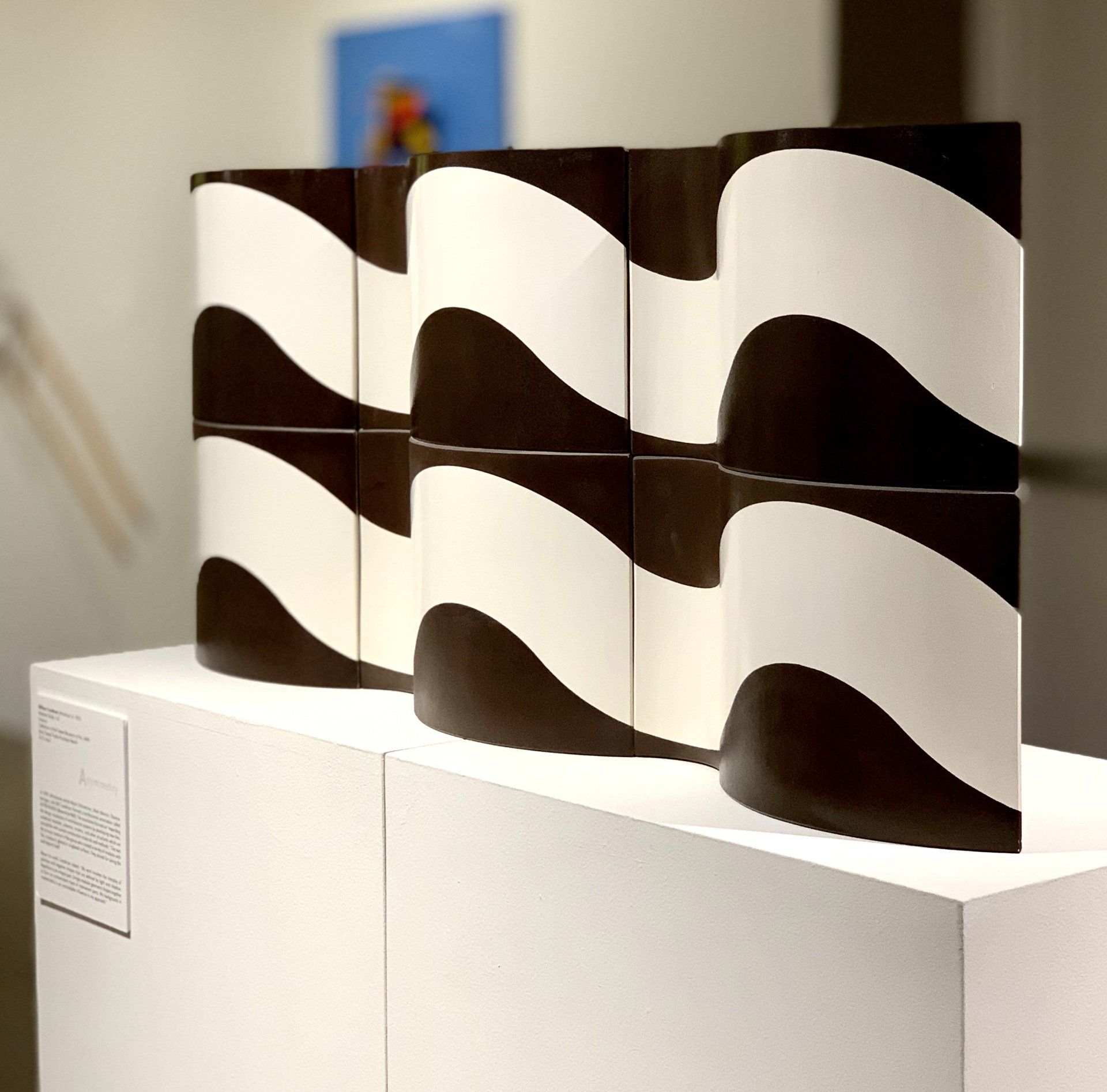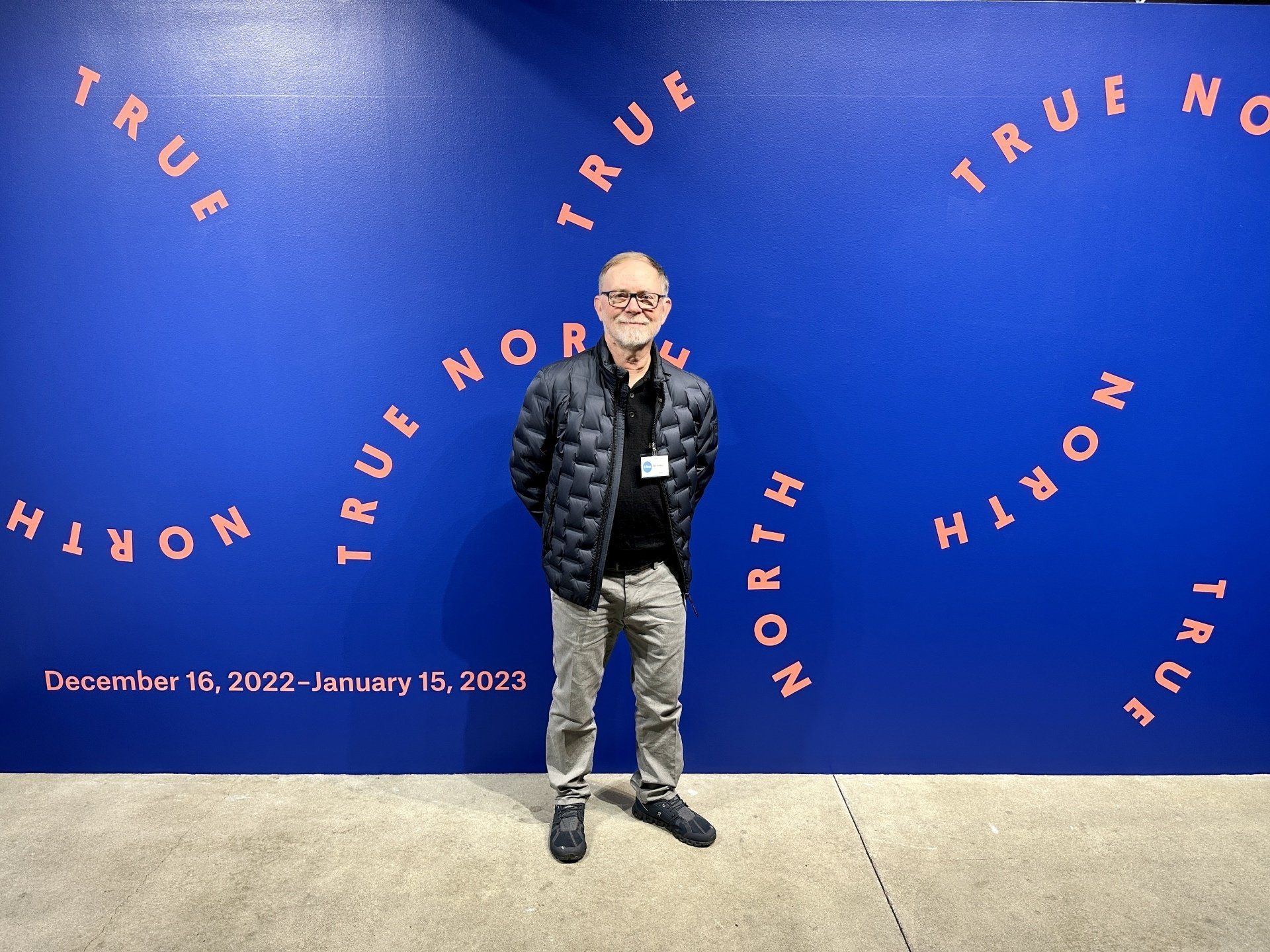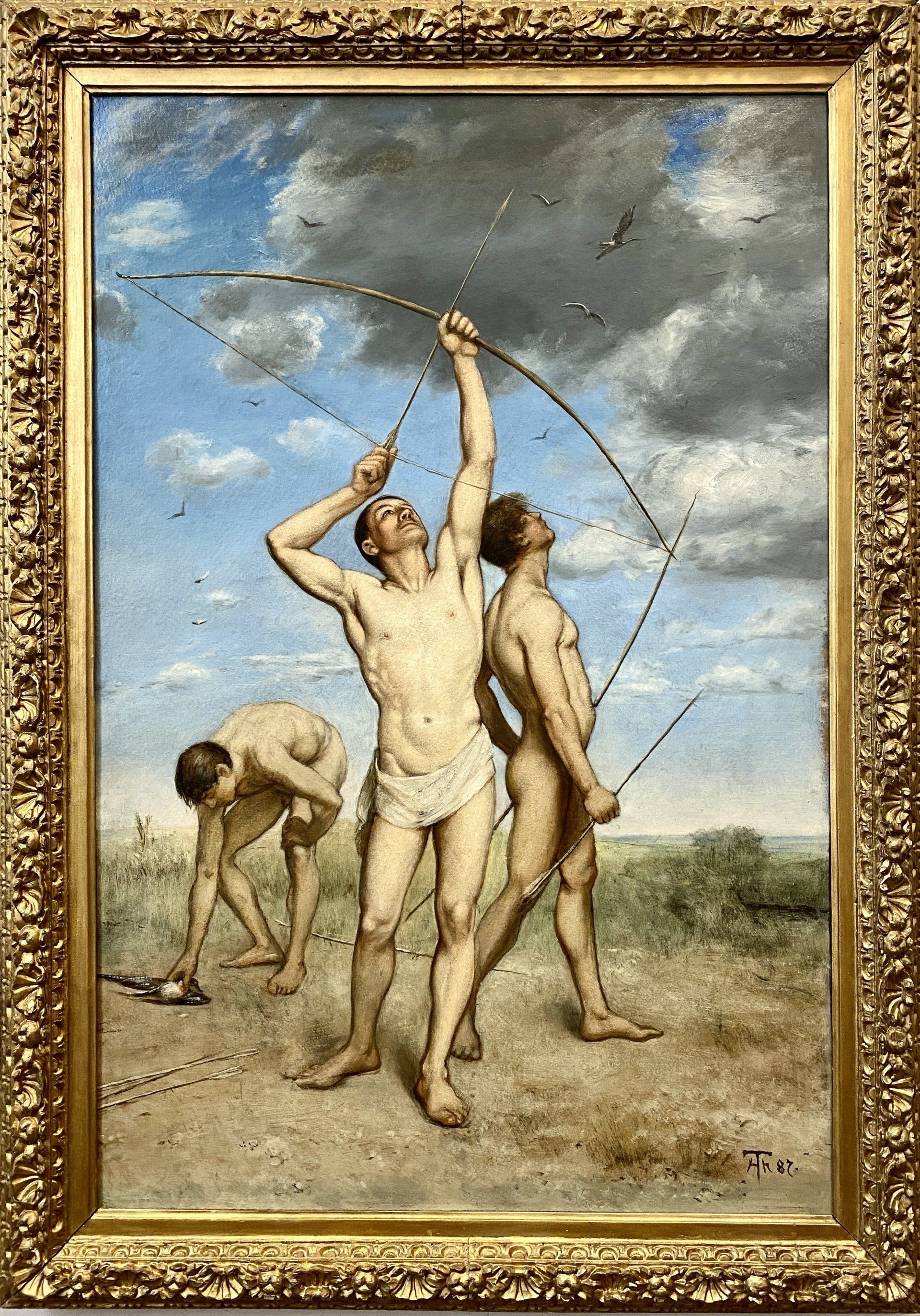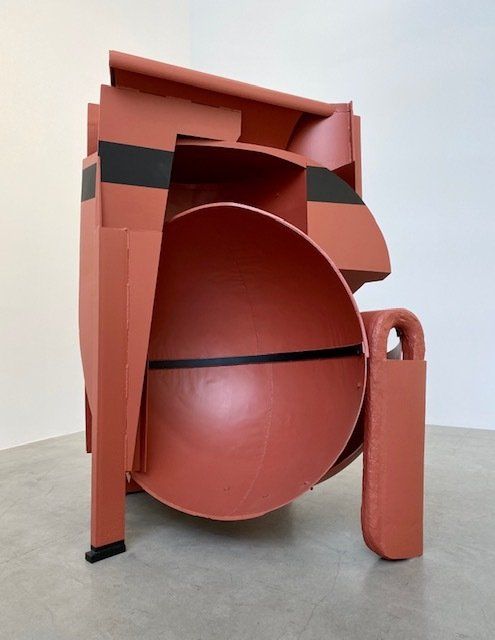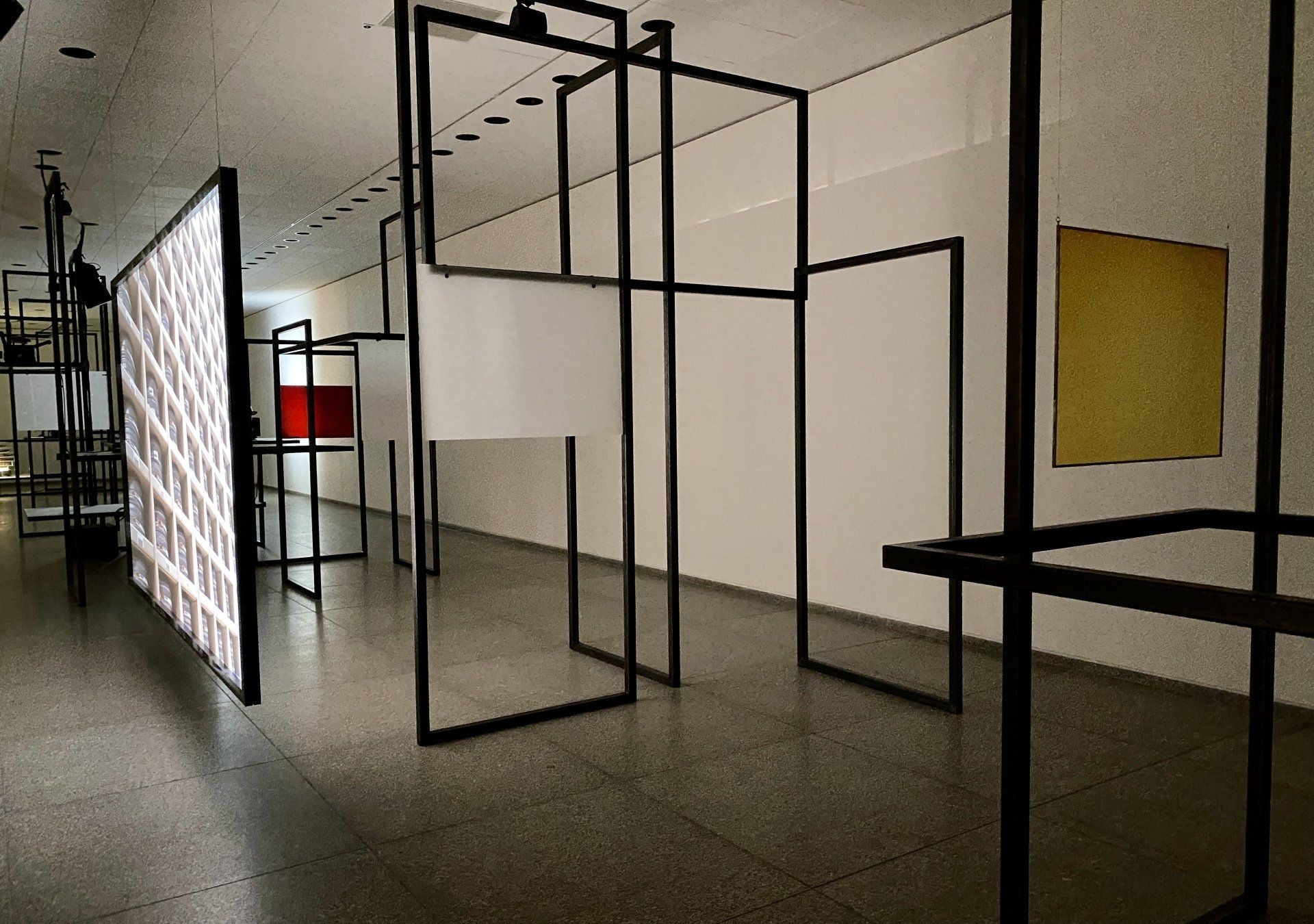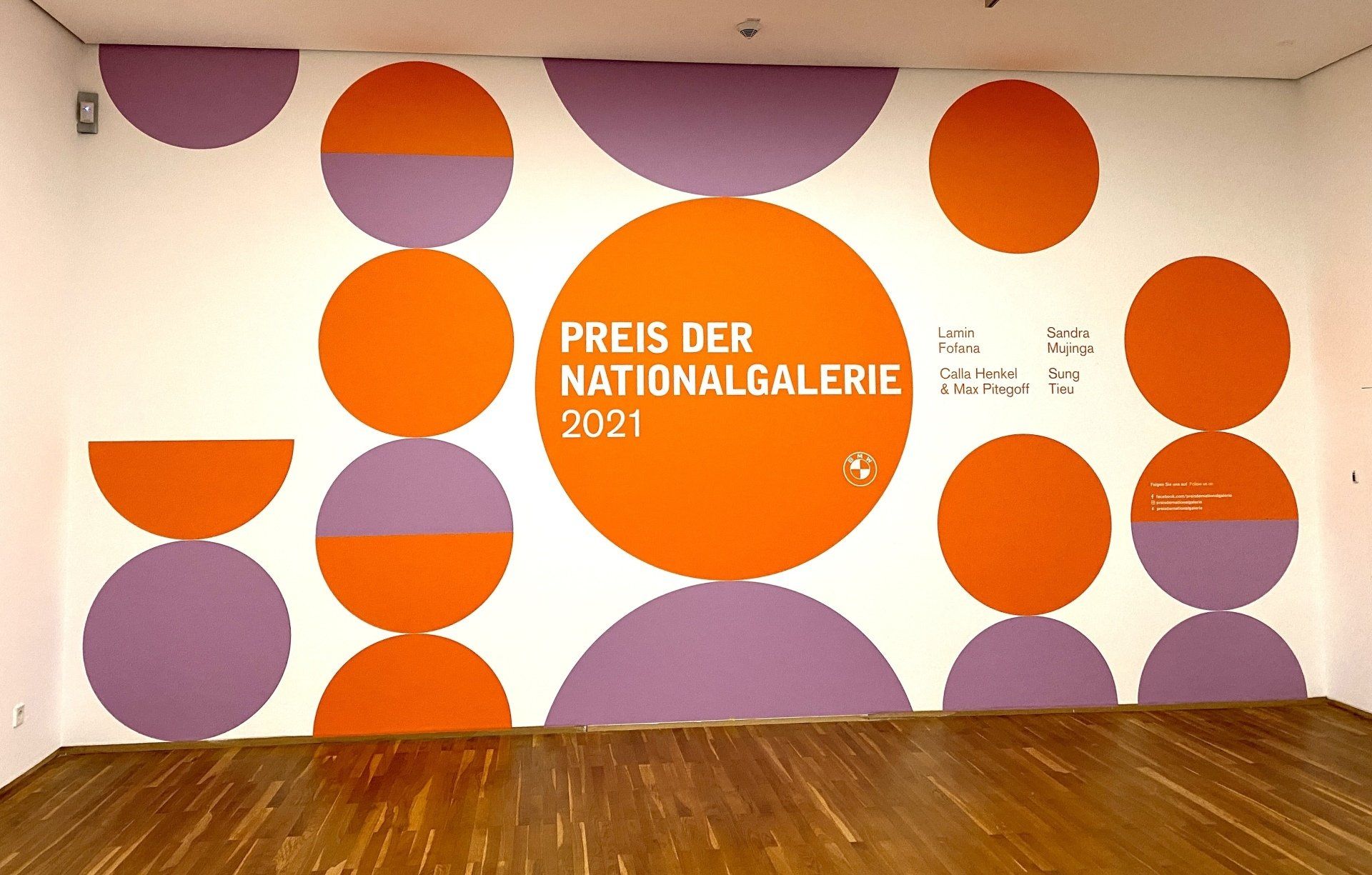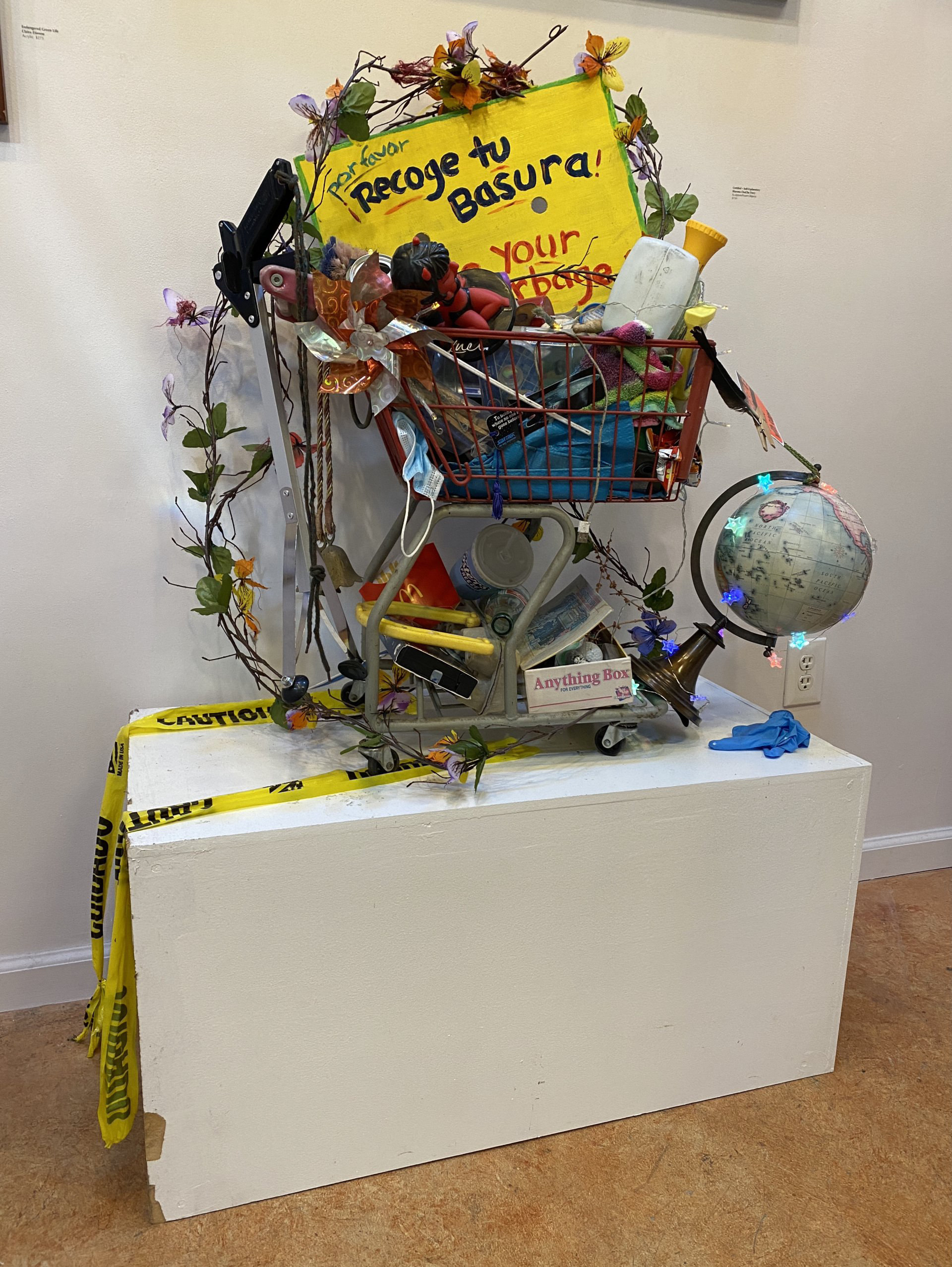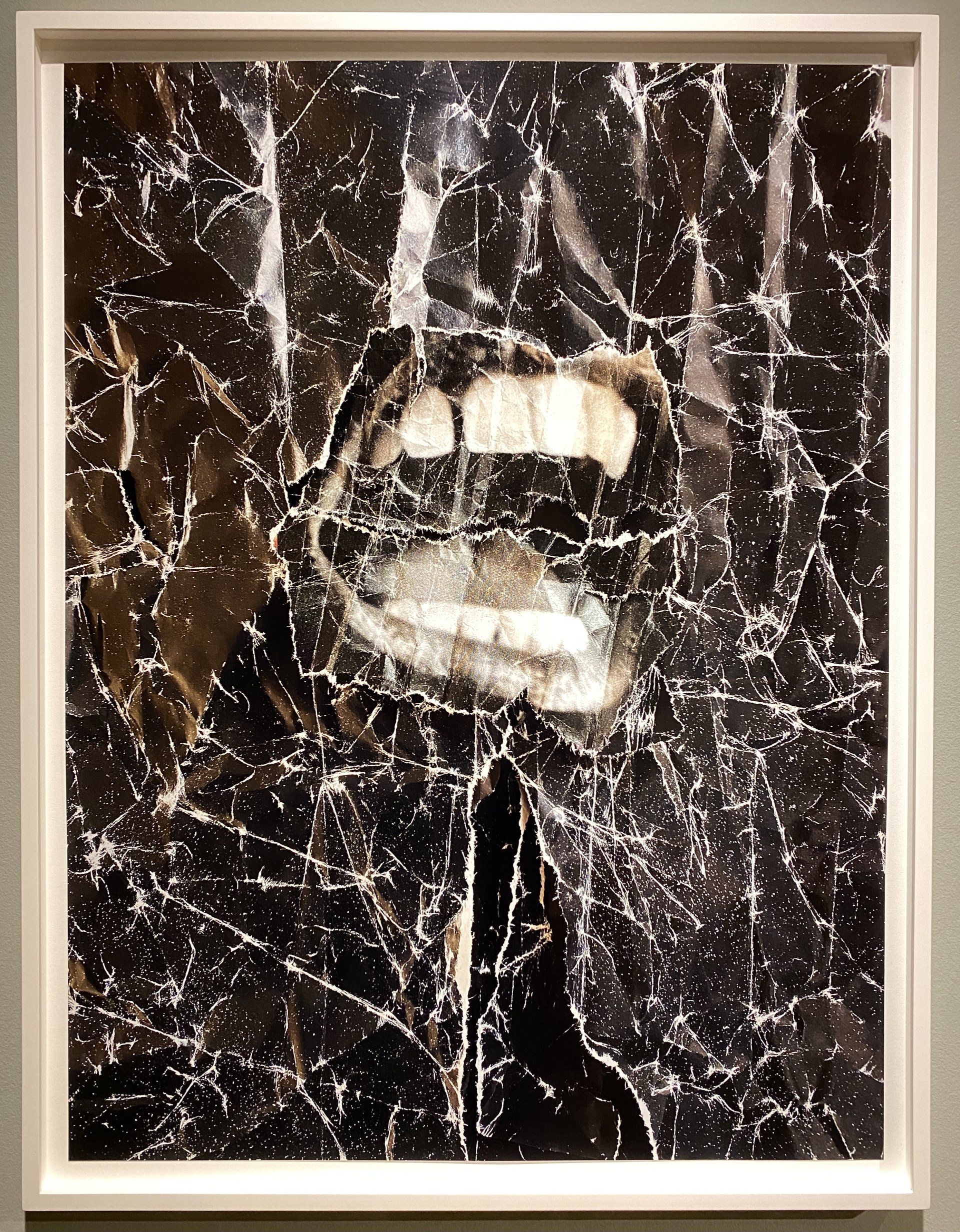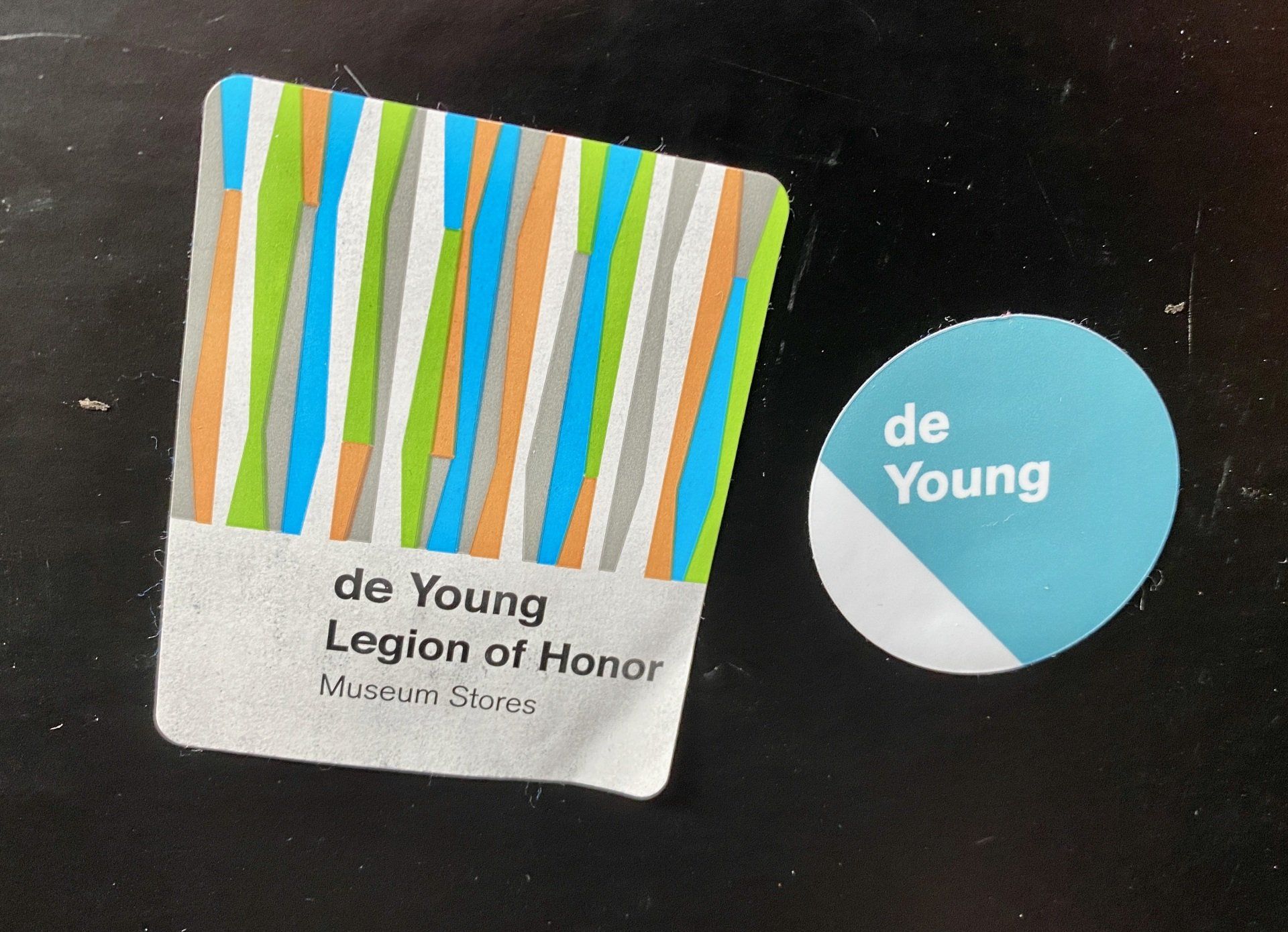Ina Weber Shrinks to Life Everyday Architecture

You never know when or where art is going to sneak up on you, and last night it did in the lobby of Berlin’s Deutsche Oper. I was drawn to an irregularly shaped sculpture pedestal off to the side of the room. On the pedestal was a downsized “city” of ceramic buildings and utilitarian structures, titled “Caretaker’s Lounge,” by Berlin artist and educator Ina Weber. This is an idea I am excited about, in fact related concepts have been the basis of my recent bodies of work (collage pieces, oil and watercolor paintings, and 3-D stage models).
Weber’s buildings are rough-hewn, and are honest, in that their “clay-ness” is apparent. The colors range from pastel to bright glazes. They are big enough and weighty enough to not read as toy-like, but graduate to iconic symbols for the functions these buildings perform: transportation, housing, and recreation. The layout of “Caretaker’s Lounge” loosely represents a section of a small city, and invites the viewer to visually walk and explore this 3-D map. And even though there is an eastern-bloc mood, this city feels familiar. There is a flavor of the early 60’s, but also a timelessness - as these structures function as place holders for how towns, cities and countries organize civic life.
The exhibit has a listing of titles for the individual buildings, but no statement or explanation - which in this case, encourages the viewer to wander through the “streets” of “Caretaker’s Lounge” and draw his or her own conclusions about this place, what kind of society has created it, and to savor the mystery of the aspects that are left unexplained.
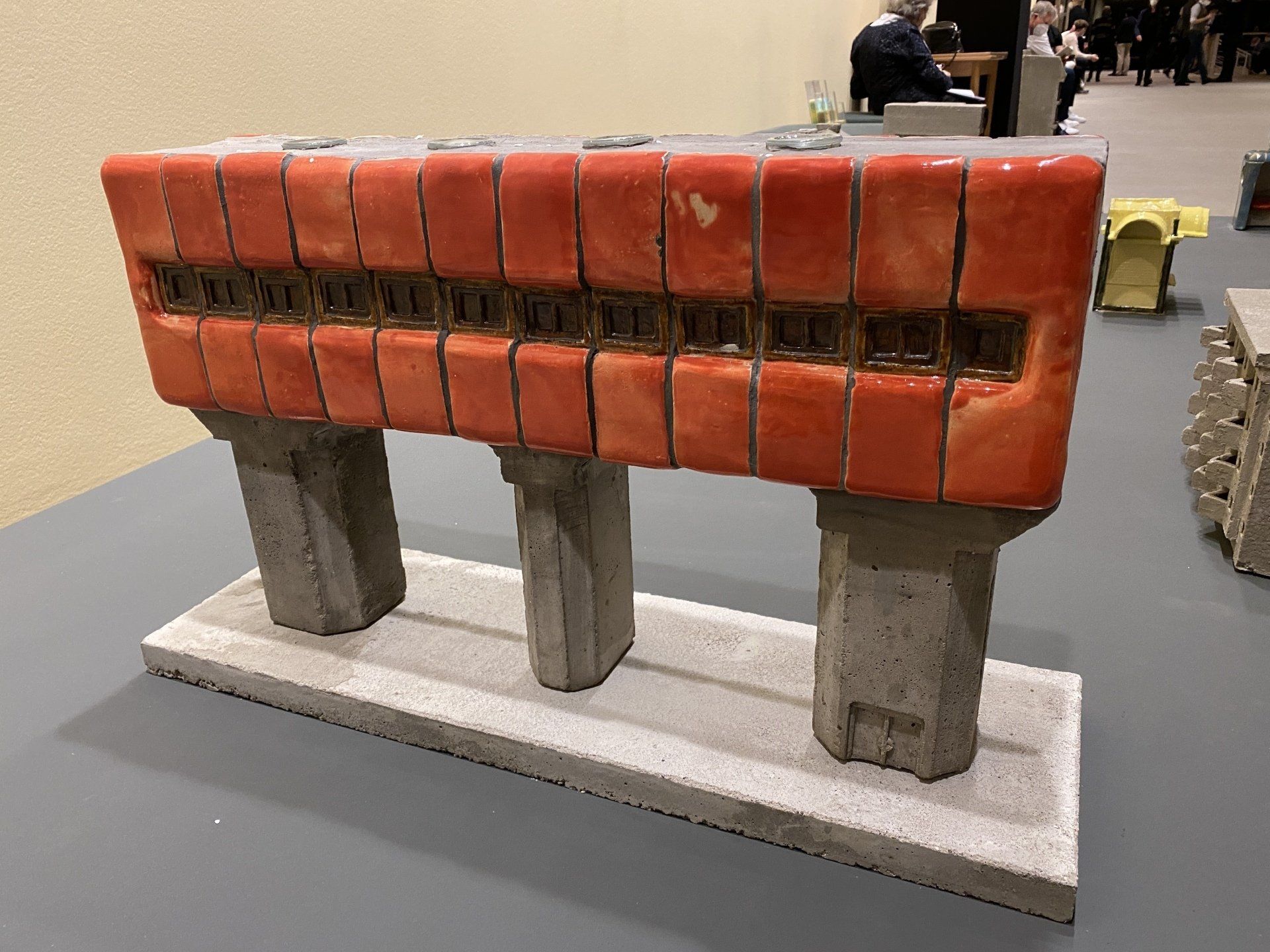
Autobahn Restaurant - 2013
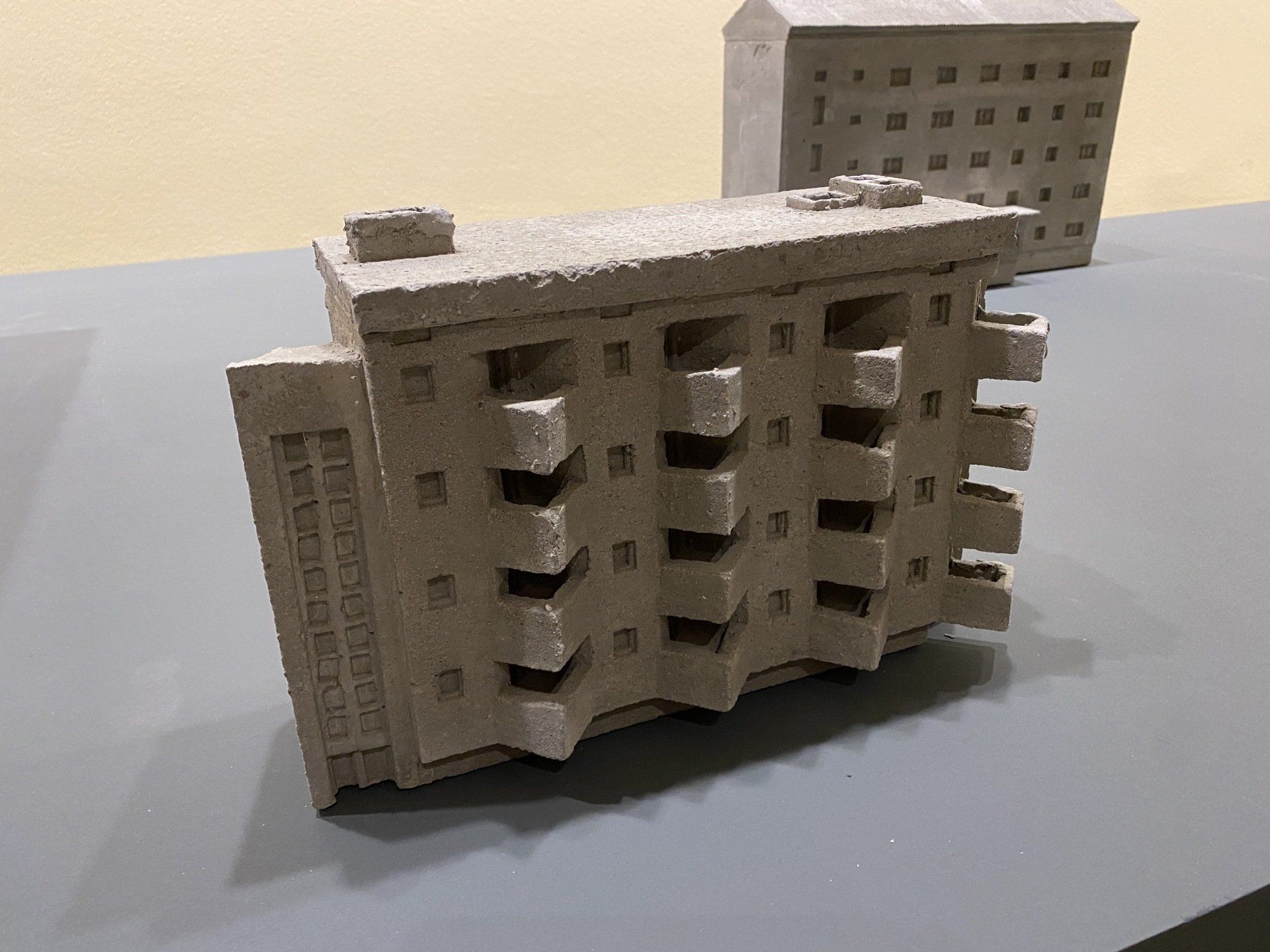
Apartment Building - 2012
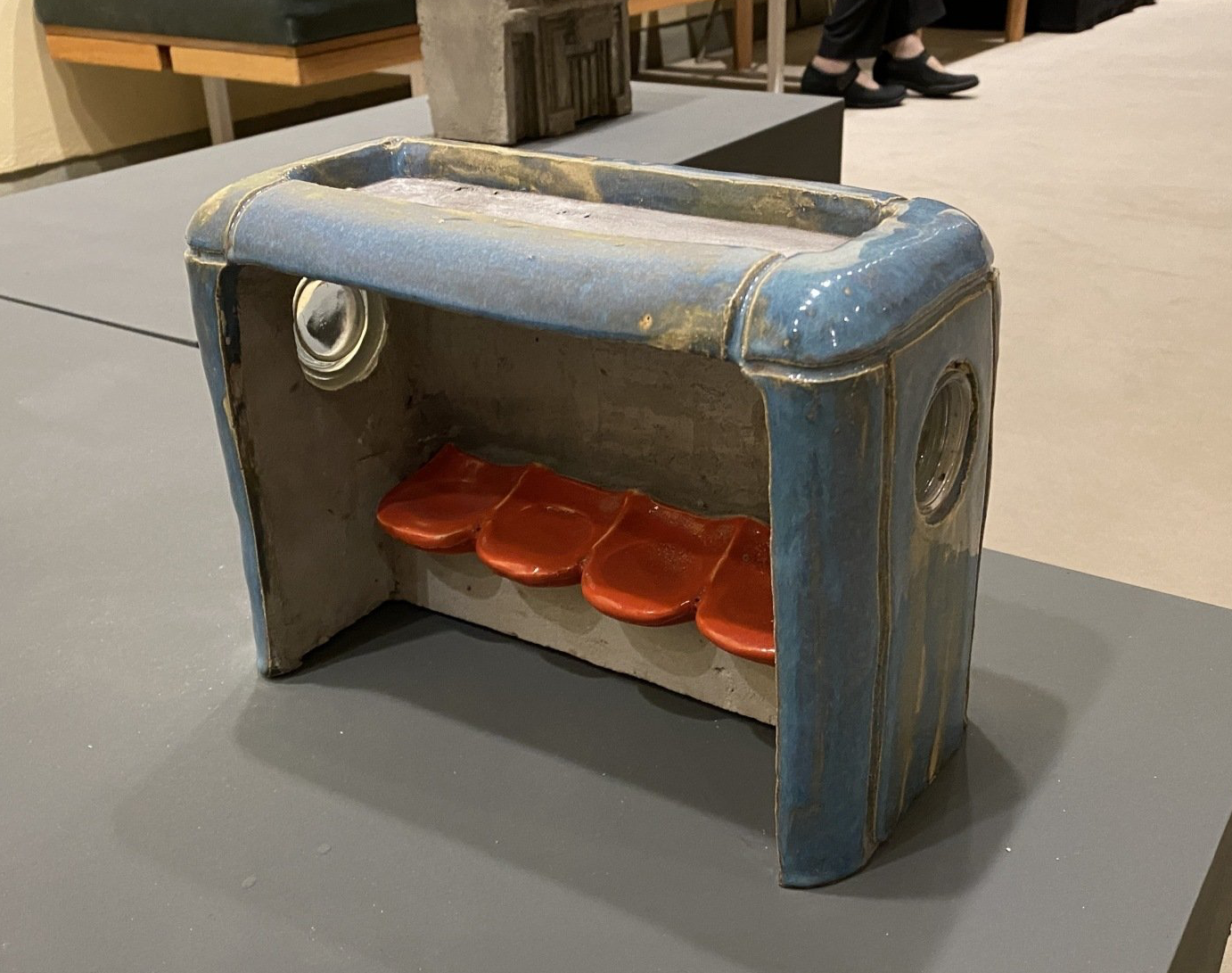
Bus Shelter - 2013
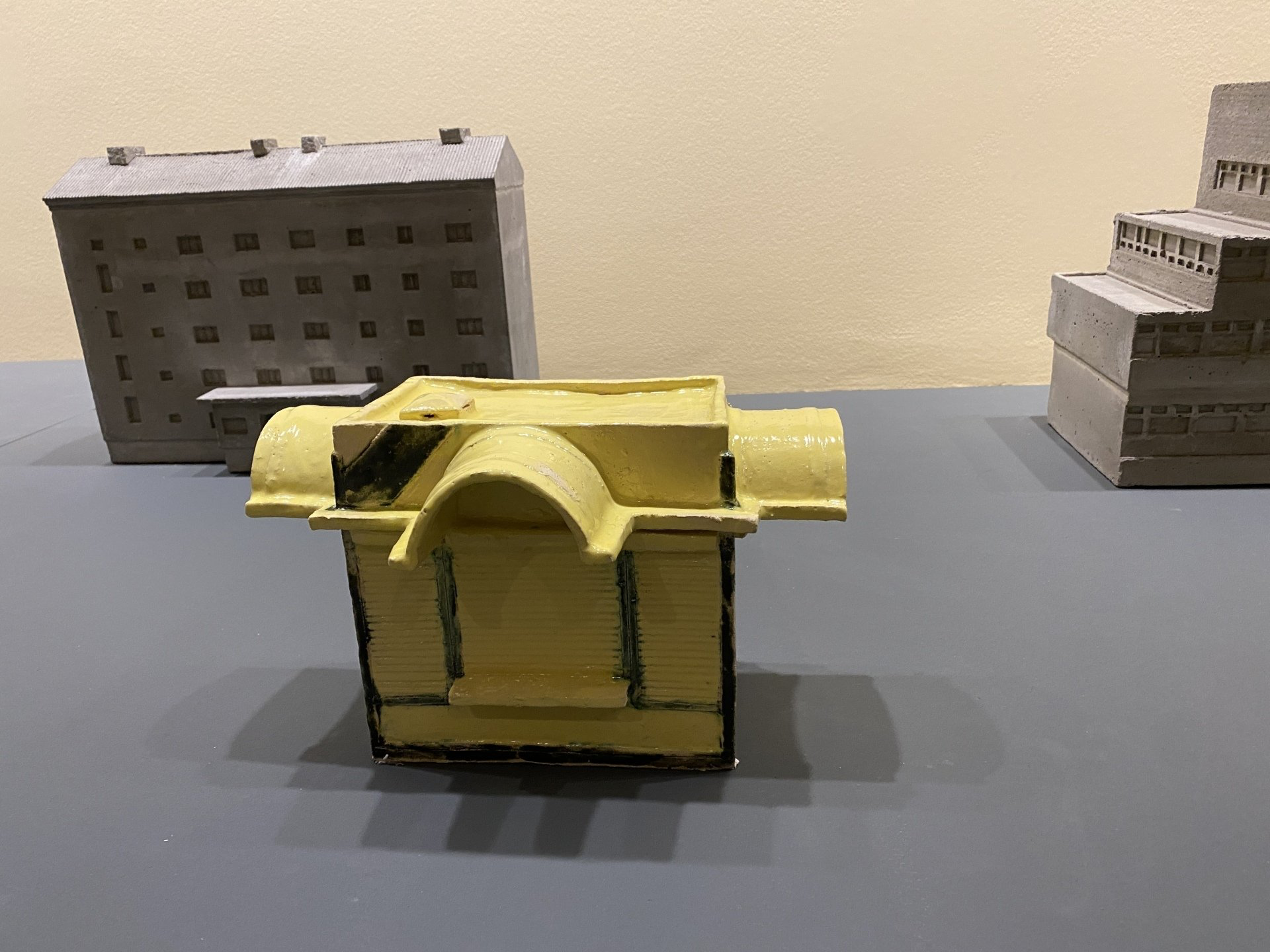
(foreground) Kiosk Swinousje - 2015, (background, left) Tenement - 2009
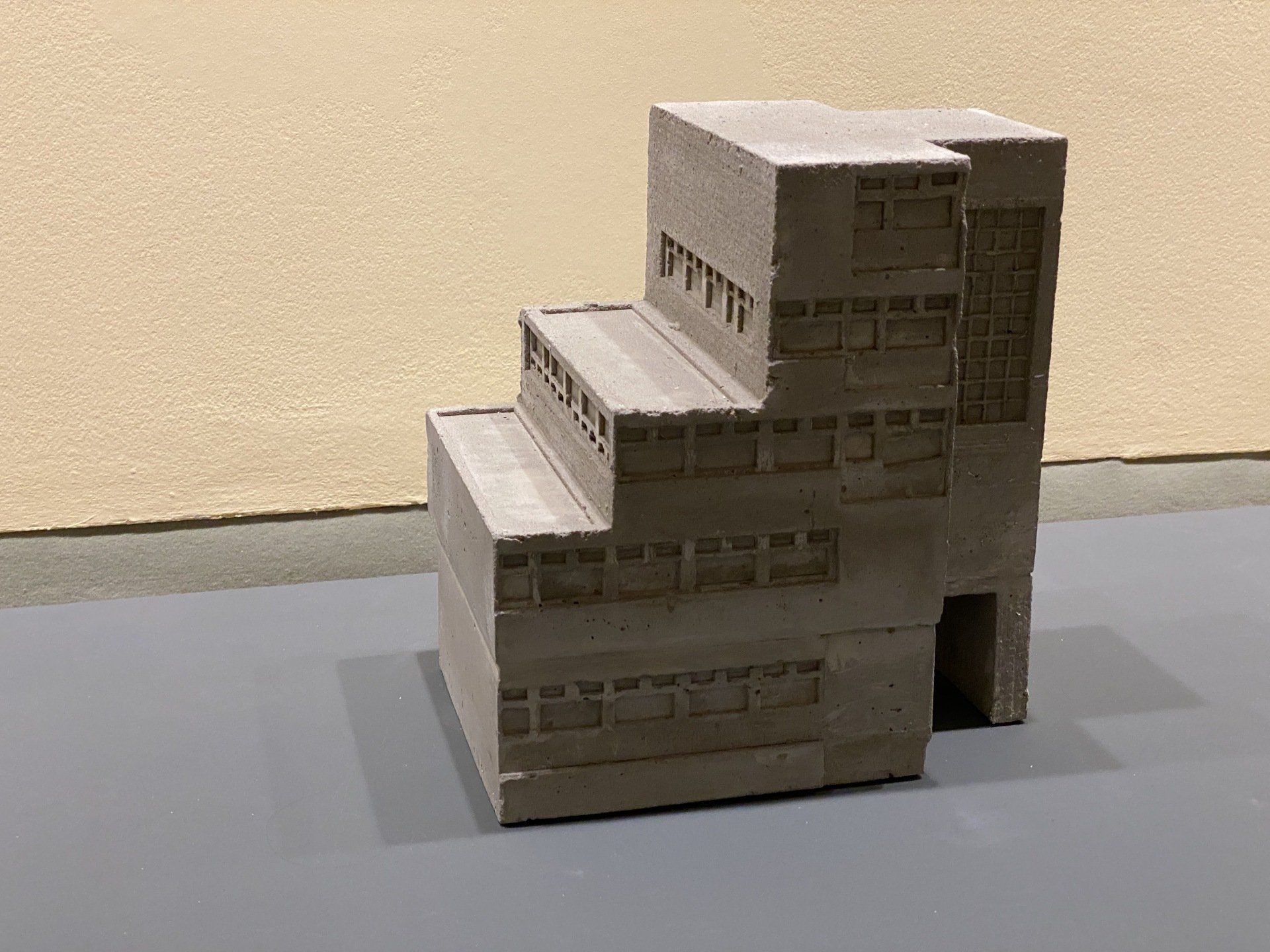
Nursery - 2012

Mon Bar - 2021

